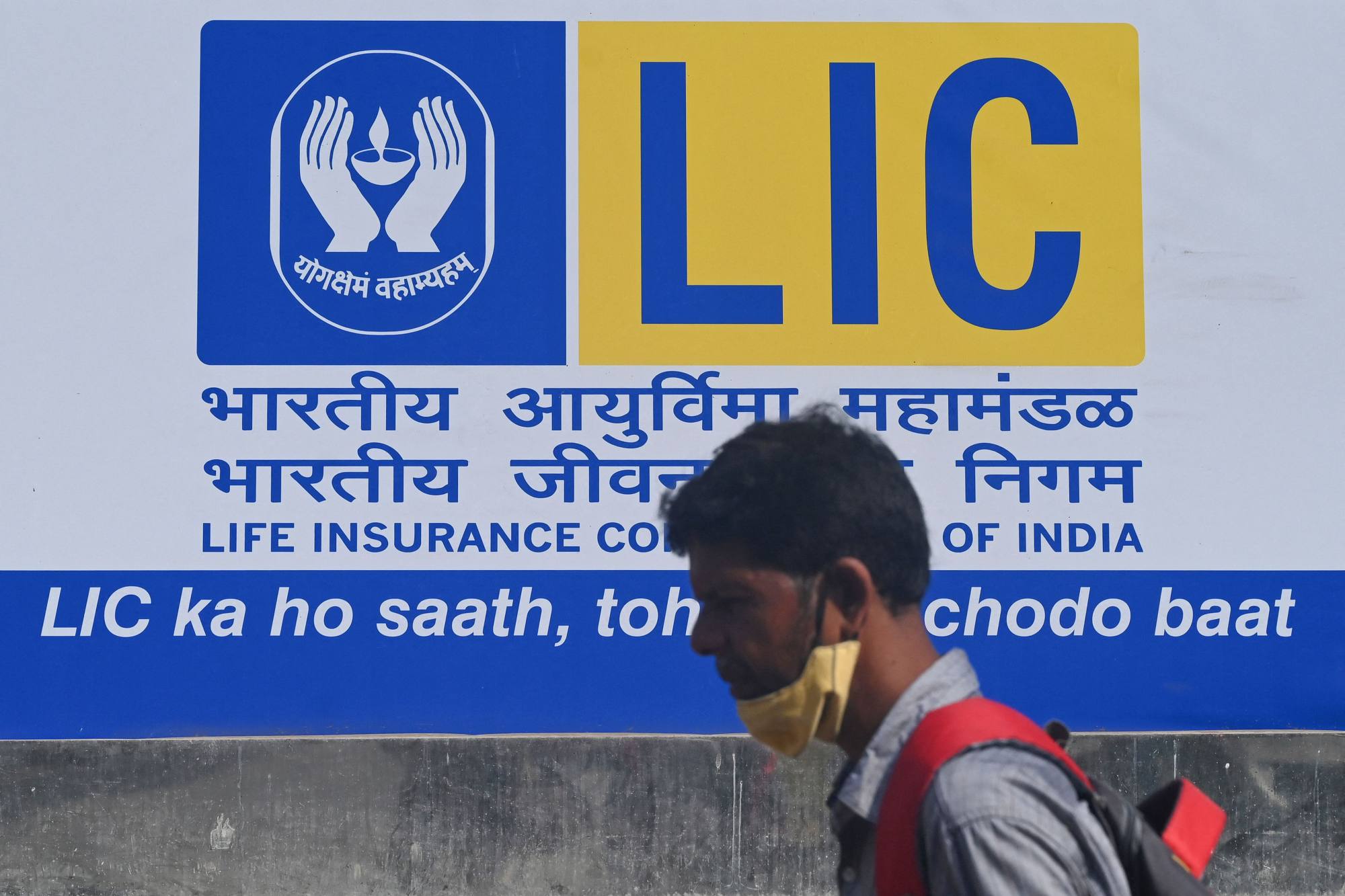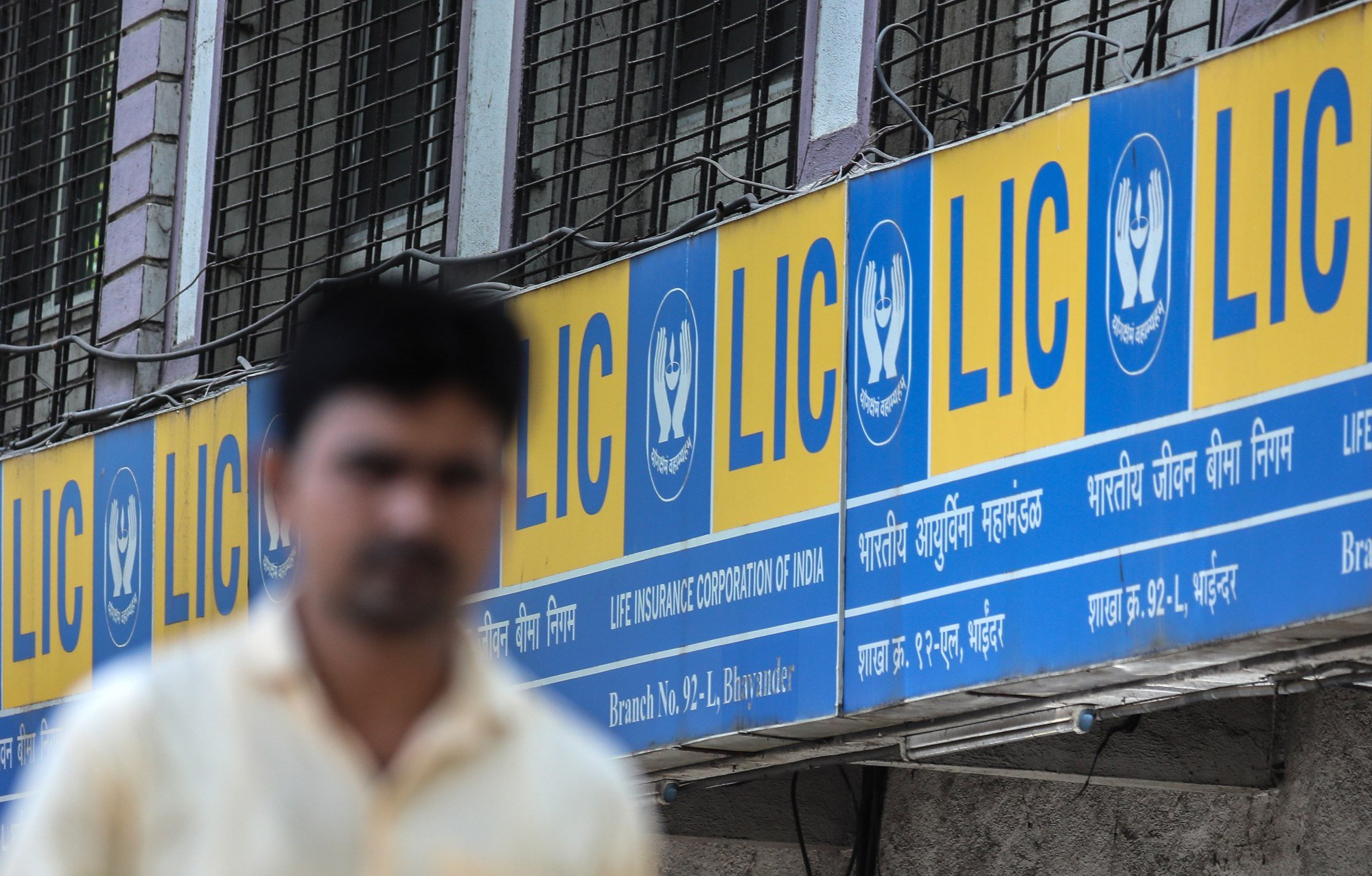
India’s largest IPO: LIC listing draws interest from retail investors, big names like Singapore’s GIC despite inflation, war worries
- Russia’s invasion of Ukraine, inflation worries, monetary tightening and slowing economic growth did not deter investors from buying all 221 million LIC shares
- India’s government is desperate for proceeds from the sale of its 3.5 per cent stake in Life Insurance Corporation to help plug a shortfall in its budget
The share offer, which opened on Wednesday and closes on Monday, was set to eclipse the US$2.5 billion raised last November by One97Communications, parent of digital payments giant Paytm, in its IPO. LIC’s bumper offer of 221.4 million shares was fully subscribed on day two in sharp contrast to Paytm’s IPO that sold out only on the final day.

“Demographic tailwinds” thanks to India’s 1.4-billion population and still widespread under-penetration of the insurance market will fuel the industry’s “multi-decadal growth” and LIC, as market leader, “is poised to benefit,” Samco equity research head Yesha Shah said.
Generous discounts being offered to small investors, employees and policyholders to buy LIC shares were “the cherry on the cake,” Shah added.
But then the government opted to sell only 3.5 per cent and cut the company’s valuation by around 50 per cent. The goal was to ensure that “even if we have a little bit of a constrained environment, we can still pull it off,” said disinvestment secretary Tuhin Kanta Pandey.

But such is LIC’s colossal size that even though the offering was drastically scaled back, the IPO is still India’s largest, Pandey said. “This is right-sized considering the capital market environment,” he added.
But amid fears of a global recession, the government, whose revenues have been sapped by the pandemic, has been forced to lower its divestment goal for this financial year to US$8.5 billion (Rs 650 billion), amounting to just a third of its original target.
LIC chairman M.R. Kumar said the government did not expect to “divest more of LIC in the near future” but added that “over a period of time” it should sell 20 to 25 per cent.

Investors in the IPO were undeterred by a shock 40 basis-point hike on Wednesday in the Indian central bank’s key lending rate and a stark warning by bank governor Shaktikanta Das of “tectonic shifts” in the economic landscape due to “synchronised shocks” of soaring commodity prices, supply bottlenecks and inflation.
Underpinning demand for the insurer has been the sentimental attachment generations of loyal clients have for the brand, due to its ubiquitous presence in so many Indians’ lives. LIC, with its familiar blue-and-yellow logo and slogan “Your Welfare Is Our Responsibility” was the only insurer until 2000 when the government opened the sector up to private players. Many investors regard LIC as a secure “mothers-and-orphans” share as the insurer controls two-third of the Indian market with nearly 300 million policies in force.
LIC has dominated the market since the country’s first prime minister Jawaharlal Nehru combined the country’s 245 insurance companies and provident fund societies in 1956 with the aim of offering life insurance to all levels of society.
But while the offer looks attractively priced, there are still worries about the burden state control of LIC may place on the company’s prospective returns. The government has traditionally turned to deep-pocketed LIC as “investor of last resort” to rescue troubled publicly owned firms.
Some analysts fear the government will keep using the insurer as a piggy bank, even when it’s publicly traded, for bailout money. In fact, the February draft share prospectus noted specifically LIC “may be required to take certain actions in furtherance of the economic or policy objectives.”
There are also concerns LIC won’t be able to perform as nimbly as private insurers which have been growing at a compound annual growth rate of 18 per cent, twice as fast as LIC, and gaining market share.
But Reliance Securities analyst Arafat Saiyed said he saw LIC as a solid investment “in view of its giant market share, largest number of assets under management, strong brand, diverse portfolio of products and valuation comfort.”

The government’s move to value LIC far lower than private-sector peers has prompted the opposition Congress party to say it smacked of “desperation.” Congress spokesperson Randeep Surjewala noted the prospectus initially said the government would seek 2.5 times the insurer’s embedded value but the current valuation is just 1.1 times. Embedded value is a critical measure of the worth of business on an insurer’s books. In contrast, HDFC Life trades at a multiple of 3.9 times its per-share embedded value, SBI Life at 3.2, and ICICI Prudential Life at 2.5, Surjewala said.
The publicly owned insurer’s “relatively very low valuation” is “especially glaring since LIC holds over three times the assets under management of all life insurers combined,” commented leading financial daily Business Standard in an editorial. Investment secretary Pandey, though, called LIC’s valuation “fair and attractive” and said it was decided after widespread consultation with merchant bankers. The government “wants to champion LIC as a long-term value creator” for shareholders, he added.
